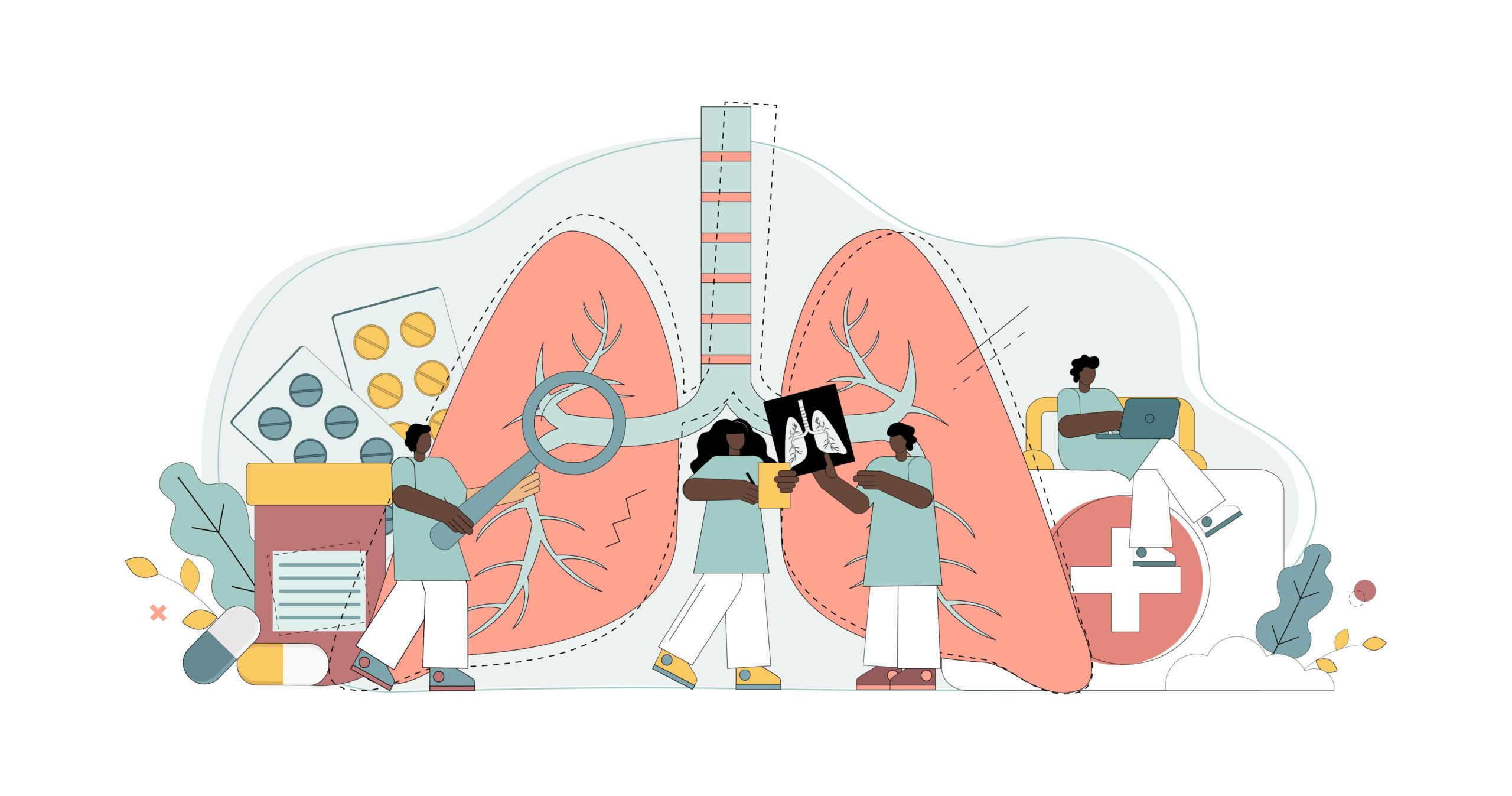Abstracts presented during the
Brensocatib was approved by the FDA for use in bronchiectasis just this year based on the findings of the ASPEN trial (
An abstract reporting on the effect of brensocatib on sputum NSP concentrations compared with placebo through 52 weeks of treatment and 4 weeks of follow-up was presented during the conference.2 All participants were adult patients from the ASPEN trial and were required to have at least 2 instances of pulmonary exacerbations in the 12 months prior to screening for the trial. Participants were split 1:1:1 for 10-mg brensocatib, 25-mg brensocatib, or a matching placebo. Sputum samples were collected at baseline and weeks 4, 16, 28, 40, 52, and 56, with the last sample being collected 4 weeks after treatment.
There were 105 participants in the 10-mg group, 108 in the 25-mg group, and 115 in the placebo group who were included in the analysis. Neutrophil elastase (NE), cathepsin G (CatG), and proteinase 3 (PR3) were the primary NSPs evaluated and varied between the 3 groups at baseline.
Both groups receiving brensocatib saw a decrease in activity of NE, CatG, and PR3 by the fourth week compared with the placebo group, which did not see any change. The median (range) percent change in the 10-mg and 25-mg groups was –33.7% (–58.8% to 0.0%) and –41.2% (–71.1% to –3.6%), respectively, compared with –4.6% in the placebo group for NE; similar results were found for median change in CatG (–39.7%, –48.1%, and 0.0%, respectively) and PR3 (–27.7%, –58.4%, and 0.0%, respectively). When participants stopped taking treatment, activity returned to baseline.
The authors concluded that active receipt of brensocatib resulted in the reduction of activity in NSP within the first 4 weeks of taking the treatment. The 25-mg dose also resulted in a higher reduction in activity compared with the 10-mg dose.
The second abstract focused on the effect of brensocatib on symptom burden for patients with bronchiectasis with or without pulmonary exacerbations.3 The ASPEN trial had previously found that both the 10-mg and 25-mg doses of brensocatib had reduced the rate of pulmonary exacerbations, the time to first exacerbation, and increased the odds of going without an exacerbation for 52 weeks. This analysis instead focused on how brensocatib affected symptoms of those with bronchiectasis with or without pulmonary exacerbations using the Bronchiectasis Exacerbation and Symptom Tool (BEST).
Participants were all from the ASPEN trial randomized 1:1:1 to 10 mg of brensocatib, 25 mg of brensocatib, or placebo for 52 weeks. Severe exacerbations were defined as those that required intravenous antibiotics or hospitalization. The BEST measurement assessed breathlessness, fatigue, sputum volume, cough, symptoms of the cold or flu, and sputum purulence. These measurements were taken each day until the end of the study. Lower scores indicated fewer symptoms.
There were 784 participants in the group without exacerbations, 879 in the group with any exacerbation, and 194 in the group with severe exacerbations included in the study. Symptom burden was greater in patients with exacerbations compared with those without any exacerbations. Those who used brensocatib had a baseline decrease in BEST score that was greater than those who did not take brensocatib across all subgroups.
Those who took brensocatib had reduced symptom burden 21 days before and after a severe exacerbation compared with placebo, with a mean (SD) peak score increase from baseline of 3.45 (4.1) in the 10-mg group and 3.43 (4.4) in the 25-mg group that was taken 5 to 7 days before the start date of the severe exacerbation. In comparison, the mean peak score increase was 4.07 (4.4) in those who used placebo.
The researchers concluded that symptom burden was reduced in those taking brensocatib of either dose regardless of the occurrence of exacerbations. Those without exacerbations and patients using the 25-mg dose saw the greatest reductions in symptom burden.
References
1. McCormick B. Brensocatib becomes first FDA-approved therapy for bronchiectasis. AJMC®. August 12, 2025. Accessed October 15, 2025.
2. Metersky ML, De-Soyza A, Burgel PR, et al. Effects of brensocatib on neutrophil serine protease levels in patients with noncystic fibrosis bronchiectasis: an analysis of the ASPEN trial. Presented at: CHEST; October 19-22, 2025; Chicago, Illinois.
3. Flume PA, Metersky ML, Mauger D, et al. The effect of brensocatib vs placebo on symptom burden in patients with or without on-study pulmonary exacerbations: a posthoc analysis from the ASPEN trial. Presented at: CHEST; October 19-22, 2025; Chicago, Illinois.
